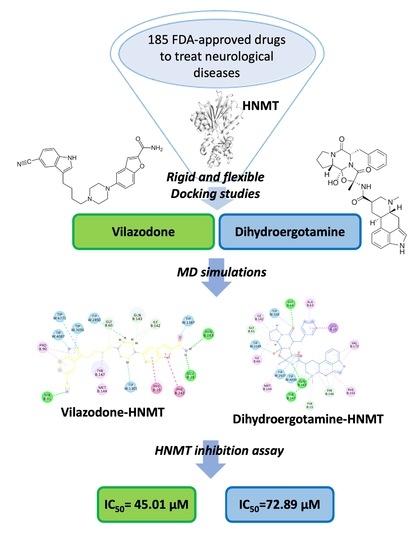What is HNMT protein?
Background of HNMT protein
The HNMT protein, in full Histamine N-Methyltransferase, stands as a crucial enzyme coded by the HNMT gene in humans. HNMT protein has an essential role in metabolizing histamine, a vital substance involved in local immune responses, gastric acid secretion, and functioning as a neurotransmitter. The protein operates by transferring a methyl group from S-Adenosyl-L-methionine (SAM) to the imidazole ring of histamine, consequently producing N(signal pathway)(signal pathway)τ–methylhistamine, an inactive metabolite.
Discovery of HNMT protein
The early 1990s marked a significant time timeline for understanding HNMT protein's role in metabolizing histamine. Before then, researchers believed that the process involved the action of imidazole N-methyltransferase (INMT). However, investigations pinpointed that HNMT was the primary enzyme responsible for inactivating histamine in the brain and most other tissues.
Gene Locus and Protein Structure
The HNMT gene lies on chromosome 2q22.1 and holds five exons, spanning approximately 6.5kb. This gene possesses a protein product that presents three domains: the N-terminus, the Core, and the C-terminus. This catalytic core contains seven-stranded β-sheets surrounded by seven α-helices with the Rossmann fold for binding SAM. The amino and carboxy termini extend from the core domain. The N-terminus is partially ordered, whereas the C-terminus is entirely disordered and concluded to be functionally unimportant.
Function of HNMT Protein
The HNMT protein plays an instrumental role in histamine metabolism, which strongly influences gut health, neurotransmission, sexual function, immune response, and sleep-wake cycles. The protein catalyses the transfer of a methyl group from S-adenosyl-l-methionine to histamine, creating an inactive product. This process, occurring predominantly in the kidneys and liver, prevents an overreaction of the immune system by maintaining histamine balance.
HNMT Protein-Related Signal Pathway
As part of the metabolic pathway, HNMT starts by binding with SAM within its active site to form a complex ready to interact with the substrate – histamine. Histamine binds to the enzyme complex, creating a ternary complex, causing the transfer of the methyl group from SAM to histamine. Once the methylation is complete, the complex subdues to create the inactive metabolite and S-adenosyl-l-homocysteine. This network of interactions represents a vital histamine signaling pathway that plays a key role in various biological responses, including inflammation, gastric acid secretion, and neural communication.

(Jiménez, E. M., et al. 2022)
HNMT Protein-Related Diseases
The HNMT protein levels and enzyme activity can impact various health issues, primarily through the misregulation of histamine levels. Conditions such as allergic diseases, inflammation-related diseases, neurological diseases, and sleep cycle disruption are associated with altered levels of HNMT. Some studies suggest a link between variations in the HNMT gene and susceptibility to Parkinson's disease and other neuropsychiatric disorders.
HNMT Protein's Applications in Biomedical
Over the recent years, the HNMT protein has captured the interest of the biomedical field. A better understanding of the HNMT protein's function allows for a more purposeful exploration of histamine-related pathologies, such as allergic reactions, inflammatory diseases, and psychiatric disorders. These studies cover areas like the development purposes of drugs designed to modulate this enzyme's activity for therapeutic purposes. Additionally, the HNMT protein serves as a biomarker of some cancers and might be useful in predicting cancer susceptibility and treatment response.
The HNMT protein plays an indispensable role in histamine metabolism, involving vital physiological outcomes. Given its parts in various conditions, knowing it's workings, structure, and function can be fundamentally useful in developing therapeutic strategies and enhancing the understanding of complex disease mechanisms. Nonetheless, more research is necessitated to fully understand the biological implications of the HNMT protein on human health and disease. Ultimately, the comprehensive understanding of HNMT protein can provide a pivotal breakthrough for the progression of biomedical sciences.
Our Featured Products
| Cat.No. | Product Name | Species | Source (Host) | Tag |
|---|---|---|---|---|
| HNMT-13863H | Recombinant Human HNMT, His-tagged | Human | E.coli | His |
| HNMT-4898H | Recombinant Human HNMT Protein, GST-tagged | Human | Wheat Germ | GST |
| HNMT-27547TH | Recombinant Human HNMT | Human | N/A | |
| HNMT-3677HF | Recombinant Full Length Human HNMT Protein, GST-tagged | Human | In Vitro Cell Free System | GST |
| NMT-2533R | Recombinant Rat HNMT Protein, His (Fc)-Avi-tagged | Rat | HEK293 | His (Fc)-Avi |
Reference
- Jiménez, E. M., Żołek, T., Hernández Perez, P. G., Miranda Ruvalcaba, R., & Inés, M. (2022). Drug Repurposing to Inhibit Histamine N-Methyl Transferase. Molecules, 28(2), 576. https://doi.org/10.3390/molecules28020576

